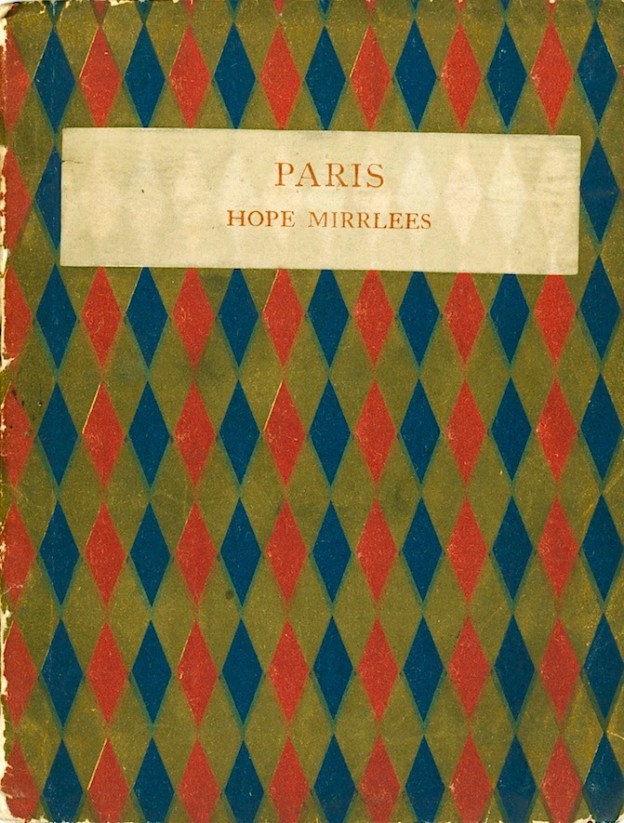Hope Mirrlees. Paris. (Leonard and Virginia Woolf at the Hogarth Press, Richmond 1919-1920)
The rediscovery of the Scottish writer Hope Mirrlees (1887 – 1978) may be principally due to the merits of her one masterpiece, the long poem Paris, which the Woolfs published in 1920. Only 175 copies of the 600 line poem were produced, which means that it now belongs with Pound’s early privately printed work as a true rara avis of modernism. In 2011 a dealer had a superb copy for $8,000 which has now sold. Predictably, critics today use the modish term 'psychogeographical' to describe the poem, which is a daring, impressionistic tour in French and English through the French capital and has been described as the 'missing link between French avant-garde poetry and The Waste Land.' The stylistic parallels are obvious, and the influences of Pound and other Imagists, are noticeable too:-
…Gambetta
A red stud in the button-hole of his frock-coat
The obscene conjugal tutoiment
Mais, c’est logique
The Esprit de Francais is leaning over him
Whispering…
…Cloacae
Hot indiarubber
Poudre de riz
Algerian tobacco
Monsieur Jourdain in the blue and red of the Zouaves
Is premier danseur in the Ballet Turque
‘Ya bon
Mama mouchi…
And so on. Paris is undoubtedly a brilliant debut and deserved the care and attention that the Woolfs devoted to it. The paper for the covers, for instance, is the same paper used as endpapers on the first edition of Jacob’s Room. Virginia Woolf hand-set the proofs herself and hand-corrected the final copies. From her diaries it would seem that the novelist /publisher regarded her brilliant, multi-lingual, young protégé, whose family fortune derived from diesel and sugar, with a mixture of admiration and disdain. She was:

...a very self-conscious, willful, prickly and perverse young woman, rather conspicuously well-dressed and pretty, with a view of her own about books and style, an aristocratic and conservative tendency in opinion & a corresponding taste for the beautiful & elaborate in literature.
Oddly, Eliot himself has little or anything to say of Paris, at least in his published letters of the period, although he came to know Mirrlees well in later years and indeed wrote portions of The Four Quartets at her home at Shamley Green, Surrey. The Oxford Dictionary of National Biography has this to say:
A 600-line modernist poem, it describes the city recovering from the First World War, haunted by its dead, yet springing back to life as it hosts President Wilson and the peace conference delegates. Paris is written partly in English, partly in French, citing or reciting Métro station names, posters, shop signs, and memorial plaques. Highly allusive and typographically original...



I don't know if it's a masterpiece- but, then, I'm not sure if Paris is- but her fine and humane fantasy novel Lud-in-the-Mist has probably kept her known more effectively than anything else.